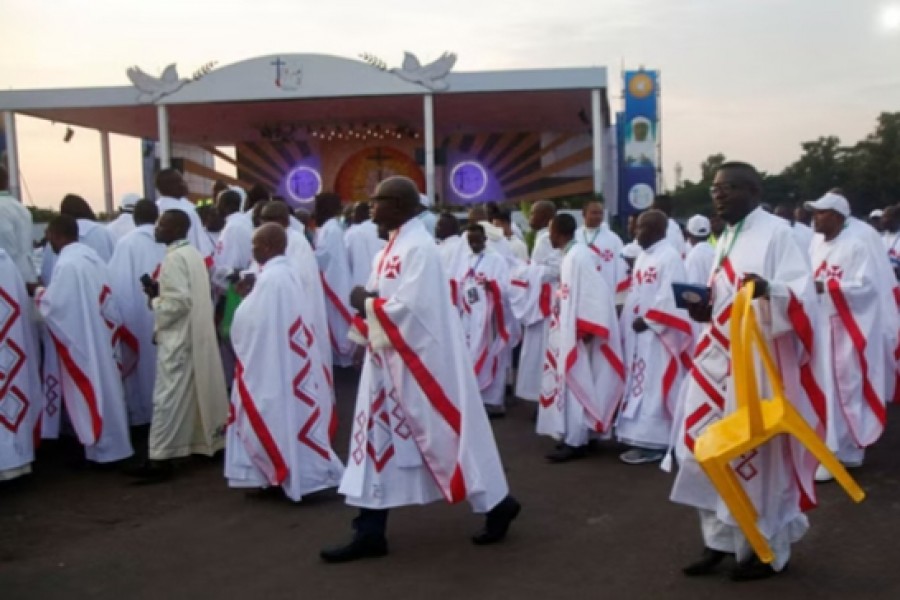A focus of Pope Francis' visit to the Democratic Republic of Congo is a meeting on Wednesday with around 60 victims of the decades of violence in the east of the country who have made the cross-country journey to see him.
The pontiff had hoped to travel to the eastern city of Goma but cancelled the stop following a resurgence of fighting in the mineral-rich region, where more than 120 armed groups are fighting for control of land and natural resources.
Millions have been killed, and millions more have been displaced by the violence in the east since the 1990s.
WHAT IS DRIVING THE VIOLENCE IN EASTERN CONGO
The conflict in Congo goes back decades, making it difficult to isolate a few causes, said Jason Stearns, director of the Congo Research Group. At the start, rebellions abroad with rear bases in Congo, local struggles over land, resources, and identity – especially over the status of groups speaking Rwandan languages, and the weakness of the Congolese state were the main causes, he said.
The state has a large responsibility because it has done little to dismantle, demobilise, or defeat any of the 120 armed groups in the east, he said.
Competition for control of the region's rich natural resources has also contributed to the violence.
Pierre Boisselet from Kivu Security Tracker, which monitors unrest in the region, said: "The conflict has reached a stage where it seems to be self-sustaining because, over the decades, a class of professionals in violence has been formed, both among local and foreign armed groups and the states of the region."
WHO ARE THE MAIN ACTORS IN THE VIOLENCE
Myriad armed groups are involved in the violence, some with a few dozen members while others have hundreds of armed combatants, sometimes along ethnic lines. The most active in recent years include:
* The M23. The name refers to the March 23 date of a 2009 accord that ended a previous Tutsi-led revolt in eastern Congo. The group says the government has not kept its promise to fully integrate Congolese Tutsis into the army and government.
It seized swathes of territory in a resurgence since March 2022, displacing over 500,000 as they advanced to the gates of Goma, leading to the cancellation of the pope's visit there.
* The Democratic Forces for the Liberation of Rwanda (FDLR), is an armed group run by mostly ethnic Hutus who fled Rwanda after taking part in the 1994 genocide. They are seen as M23's main rival. Rwanda has accused Congo of using the FDLR as a proxy, while Congo has accused Rwanda of backing the M23. Both sides have denied the accusations.
* Fighters from the Cooperative for the Development of the Congo, commonly known as CODECO, are drawn mainly from the Lendu farming community, which has been in conflict with Hema herders. They are seen as one of the most violent against civilians. The United Nations peacekeeping mission in Congo blamed the militia for a mass grave with 49 bodies including 12 women and six children found on Jan 19.
* Islamic State-linked militia, known locally as the Allied Democratic Forces (ADF) is another violent group operating in the region. It has killed and maimed scores in village raids and bombings. Islamic State has claimed responsibility for some of ADF's violence. The group is suspected of killing 20 people in a raid last week, and 14 others in a church bombing.


